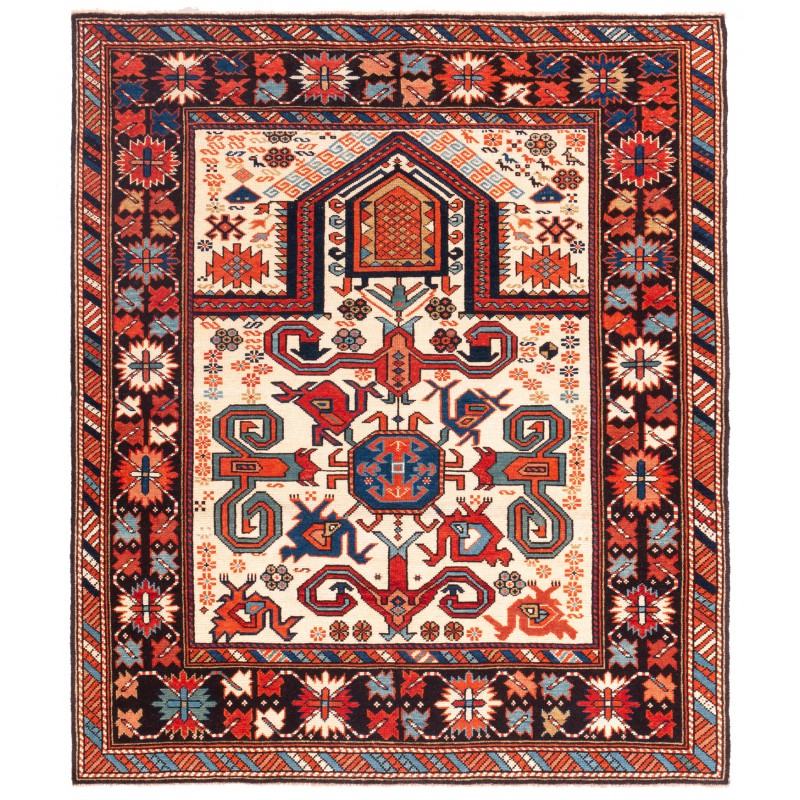
- Stock: 売り切れ
- Model: C40031
- サイズ: 112cm x 130cm
この絨毯の情報は、Ian BennettとAziz Bassoulによる著書『Tapis du Caucase – Rugs of the Caucasus』(The Nicholas Sursock Museum、Beirut、Lebanon 2003、nr.60)、『Oriental Rugs Volume 1 Caucasian』(Ian Bennett、Oriental Textile Press、Aberdeen 1993、pg.280)、および『Caucasian Carpets』(E. Gans-Reudin、Thames and Hudson、Switzerland 1986、pg.292)からのものです。これは比較的珍しい白地の祈祷用絨毯であり、19世紀末のシルヴァン地域(コーカサス地域)の興味深いペレペディルデザインのバージョンです。このデザイン自体はさまざまな解釈にさらされてきましたが、これは高度にスタイリ化された動物のパターンであるという誤解に基づいていることがしばしばあります。これは、織り手自身がウルマ(羊の角)パターンとして知っていることによって強化されています。しかし、最近の研究は、私たちが見ているものが、17世紀のテキスタイルから派生した純粋な花のデザインが、キーエレメントのわずかな変更によって動物のデザインに変わった完璧な例であることを明確に示しています。それは「カニ」デザインを主とするいくつかのボーダーで囲まれています。この絨毯のデザインは、私たちのデザイナーによって解釈され、オリジナルに合った最適な色彩が使用されています。
The source of the rug comes from the book Tapis du Caucase – Rugs of the Caucasus, Ian Bennett & Aziz Bassoul, The Nicholas Sursock Museum, Beirut, Lebanon 2003, nr.60 and Oriental Rugs Volume 1 Caucasian, Ian Bennett, Oriental Textile Press, Aberdeen 1993, pg.280 and Caucasian Carpets, E. Gans-Reudin, Thames and Hudson, Switzerland 1986, pg.292. This is a comparatively rare white ground prayer rug with an interesting version of the Perepedil design, from the late 19th century, Shirvan region, Caucasus area. The design itself has been subjected to a number of different interpretations, often based on the misconception that this is a highly stylized zoomorphic pattern. This notion is enforced by the fact that the vurma or buynuz (ram’s horn or horn) pattern is known by the weavers themselves. Recent research, however, has demonstrated quite clearly that what we are seeing is a perfect example of how a purely floral design derived from 17th-century textiles has been turned into an animal one by the slight altering of key elements. It is framed with a series of borders, the main of which is the “crab” design. The design of the rug is interpreted by our designers, and the most appropriate colors to match the original are used for this rug.
